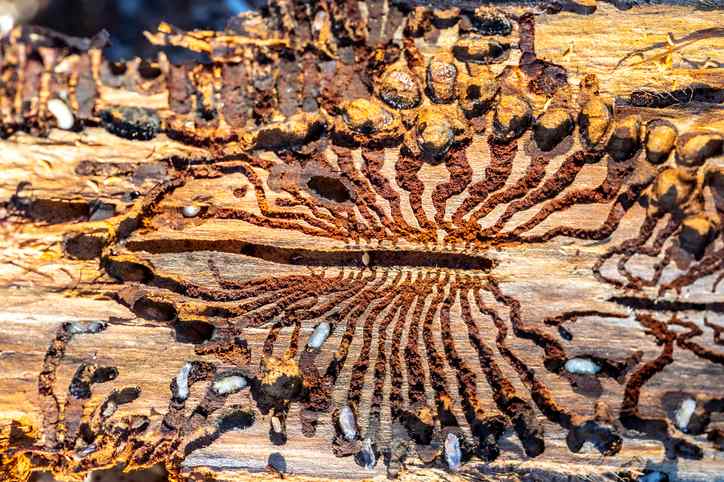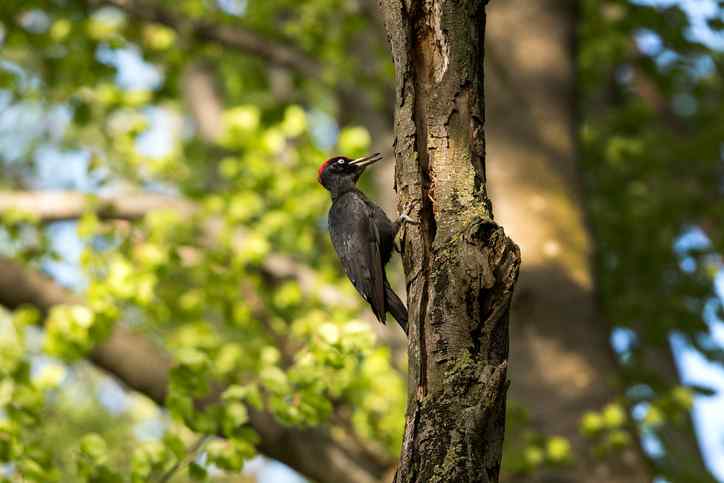With spring just around the corner, we find it's essential to shift our focus to common pests that affect trees during the spring and prepare ourselves accordingly. Our expertly trained Plant Health Care specialists are well educated in these pests, the warning signs, how they can affect your trees and shrubs, and how to treat them effectively. However, we are conscious that our customers are not experts in entomology and plant health. So we're giving you some critical insights on what to look for this spring to help you protect your trees and shrubs!
Bark Beetles:
The bark beetle (named after their natural habitat and their tendency to mine between the bark and wood of trees and shrubs) are known for being amongst the most devastating pests in coniferous forests. While the pest is native to The States and plays a vital role in ecology, their impact on insect-related tree deaths has become detrimental due to extreme climate change.
Signs of a bark beetle infestation:
On the bark:
Pitching:
- Pitching is the tree's natural defense mechanism against the bark beetle. This reaction appears on the tree's bark, leaving a minor white or reddish-brown pitch tube that resembles a ½-¾ inch sap sack.
- White pitch tubes mean your tree has successfully repelled the pest.
- Reddish-brown pitch tubes tend to mean the pest has successfully infiltrated their attack on the tree.
Frass:
- Frass tends to occur following the pitch and resembles a substance that looks like a reddish-brown sawdust substance. This is a result of the pest mining into the tree through the bark.
Flaking of Holes:
- Flaking or holes in the bark is a sign caused by the bark beetle's predator (the woodpecker) foraging for the pest.
In the leaves or needles of the tree:
The park beetle can make quick work. In some scenarios, the tree could die within weeks of the infestation. Other trees could potentially survive for years following the infestation. However, some trees may not show signs for months after death.
Yellow-green or red foliage:
- When the tree eventually begins to show signs of death, the foliage starts to fade into a yellow-green or red color.
Brown foliage:
- Other trees may show more obvious signs of death, causing the foliage to fade from green to brown.
Reddish-brown needles (coniferous trees):
- In coniferous trees, like pine trees, the needles will begin to fade into a reddish-brown hue. This tends to start at the very top of the tree and works its way down, creating an ombré effect.
How to prevent a bark beetle infestation:
It's always important to monitor your trees' health so that you can be proactive in protecting them from pests and disease. However, it's imperative to be on high alert with bark beetle monitoring because once the pest has infiltrated the tree bark, it's often too late to implement preventative pest applications. Luckily, with early detection and timely implementation of preventive treatments, the bark beetle can be eliminated before they infiltrate the tree and reproduce.
Monster Tree Service knows that it can be difficult to closely monitor your trees and shrubs. That's why we provide Plant Health Care services. With a dynamic team of highly trained, expert arborists and all the modern tools and equipment at our disposal, Monster Tree Service is prepared to help ensure the health and safety of your trees and shrubs. Our team can identify problems and propose proactive measures to match your needs and budget.

.jpg)